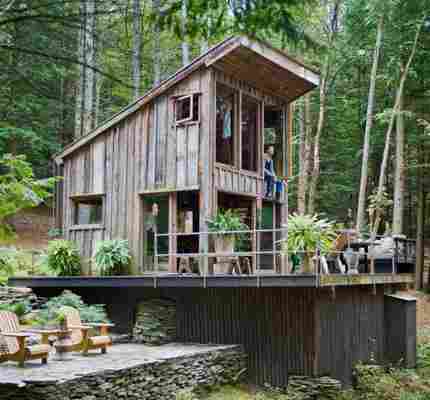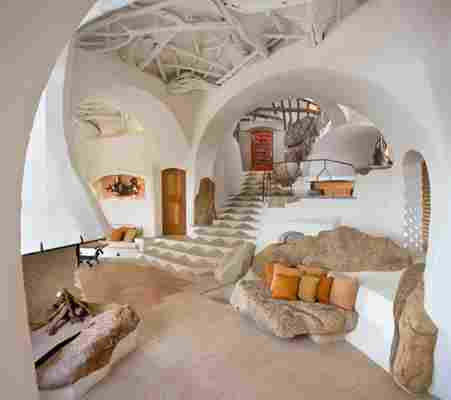Imagine tree houses in upstate New York, cavernous Sardinian villas with sculpted white cement walls, and a fairy-tale mushroom cottage in Charlevoix, Michigan, bedecked with rainbow-colored mosaics. All are featured in Richard Olsen’s book, Handmade Houses: A Century of Earth-Friendly Home Design ($45), published by Rizzoli.
But what is a handmade house, really? As Olsen states, they’re: “low-tech, if not anti-tech. It’s ‘slow architecture.’” He would know. A former Architectural Digest editor and the author of Log Houses of the World (Harry N. Abrams, 2006) he has vetted the most stunning eco-focused residences around the globe.

Olsen examines the historic roots, key designers, and the regions paving the way for this subsistence-based, owner/builder– and architect-driven movement. (California—Big Sur, specifically—appears to be its epicenter). Constructed out of natural ingredients such as twisted juniper, blackened copper, and salvaged redwood, the nearly two-dozen homes are artistic organisms that morph over time. “I wanted to learn how those dwellings have held up over the years, not just structurally but also ideologically, and to see if and how they’ve accommodated their original owners’ changing needs,” Olsen writes.

There’s no denying the emotional draw of the sustainable structures featured. Take Big Sur’s Kahn House, built around 1967. Sculptor and then owner Barbara Spring welcomed Philip Johnson to the almost primitive, shed-roof domicile built by Lloyd Kahn, a former insurance salesman turned carpenter. The Glass House ’s visionary architect was so taken by it, he reportedly wanted to buy it. As Olsen writes, Johnson simply said, “It has a feeling.”
